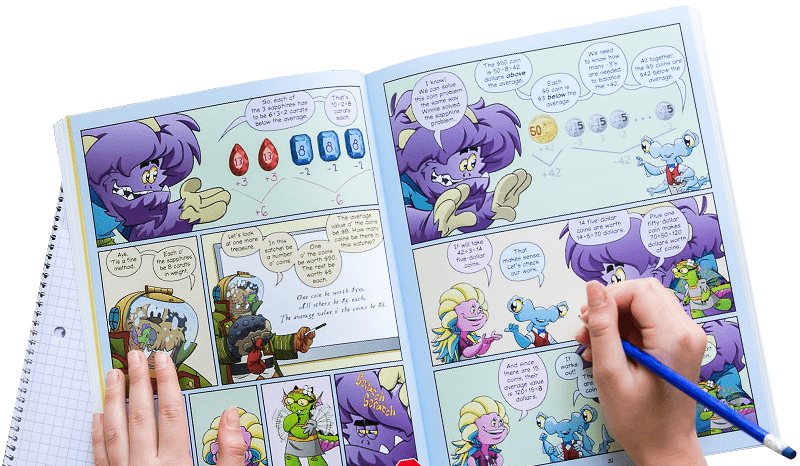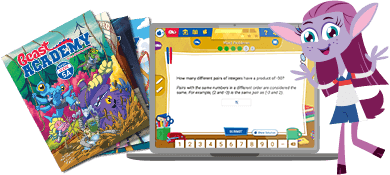Circuit Breaker
Try to connect your circuit boards before your opponent connects theirs.
Instructions
First, draw the grid of dots. Start by drawing 4 horizontal lines and 5 vertical lines.

Draw a blue dot where the lines cross. This should make a blue grid 5 dots wide and 4 dots tall. Then draw a red dot in the middle of each of the squares (and above the top squares and below the bottom squares, as shown). This should make a red grid 4 dots wide and 5 dots tall.

Finally, draw a blue line down the left and right columns of dots, and draw a red line across the top and bottom rows of dots. These are your circuit boards.

Now start the game. Each player plays a color: one red, one blue. The younger player goes first. On your turn, connect any two adjacent dots of your color. You can't cross a line that your opponent has already drawn.

Whichever player connects their circuit boards wins.

Don't forget: it's Beast Academy Playground, not Beast Academy Study Hall. Change the rules, be silly, make mistakes, and try again. The Variations and Learning Notes are here for you if you want to dive deeper, but not all of them apply to learners of every age. The most important thing is to have fun.
What do you think of this activity?
We're always looking to improve. Submit your feedback to us below.
- markers
- pencil
- paper
- spatial reasoning
- strategic thinking
- MP1
- MP7
- 2.G.A.2

Ready to level up?
Keep problem solving with Beast Academy’s full math curriculum for students ages 6–13. Check out our captivating comic book series and immersive online platform.
LEARN MOREBring problem-solving to your classroom
Keep your entire class engaged with a full book and online math curriculum, for students ages 6–13. 98% of teachers say they’re satisfied with Beast Academy.
LEARN MORE



Ready to level up?
Keep problem solving with Beast Academy’s full math curriculum for students ages 6–13. Check out our captivating comic book series and immersive online platform.
LEARN MOREBring problem-solving to your classroom
Keep your entire class engaged with a full book and online math curriculum, for students ages 6–13. 98% of teachers say they’re satisfied with Beast Academy.
LEARN MORE
Sign up to be notified when new videos are released.

















































